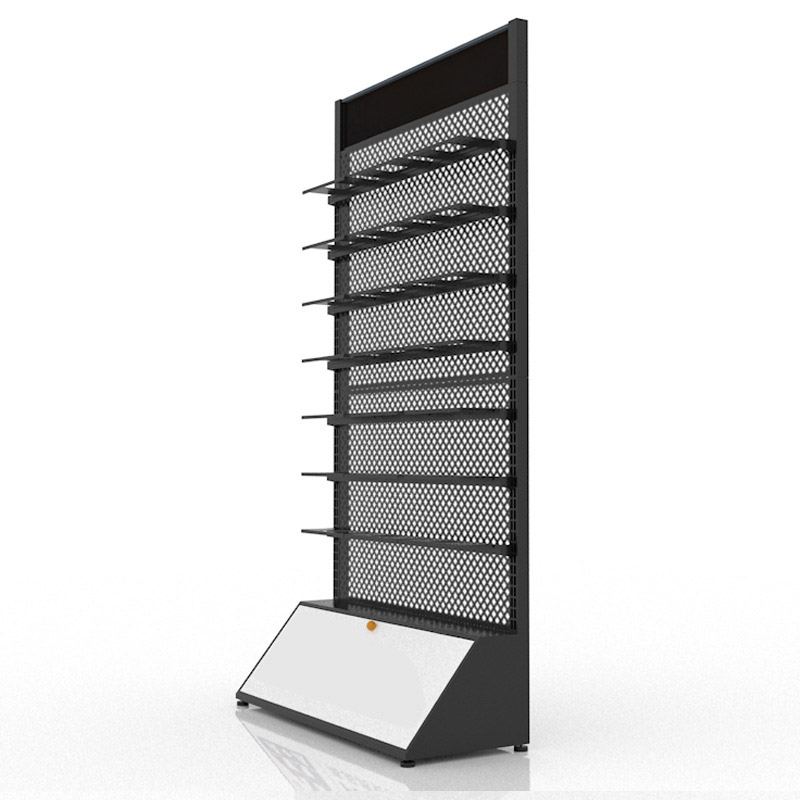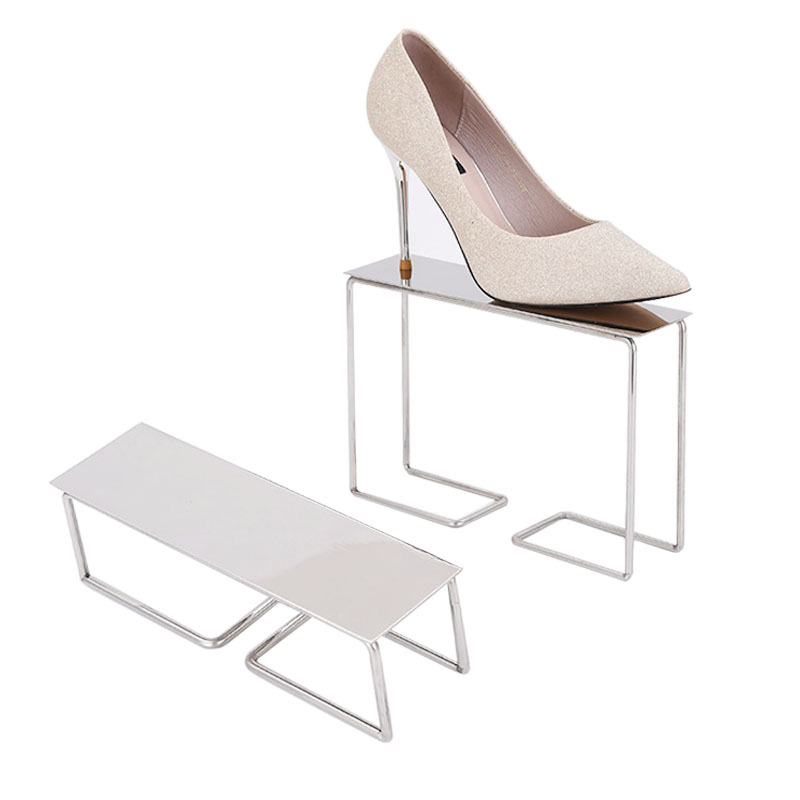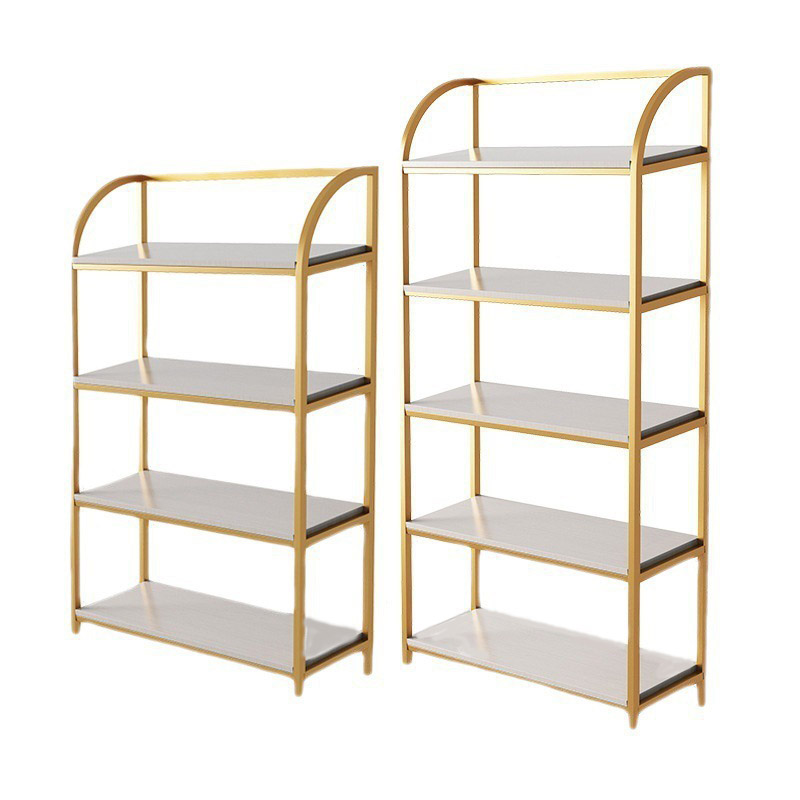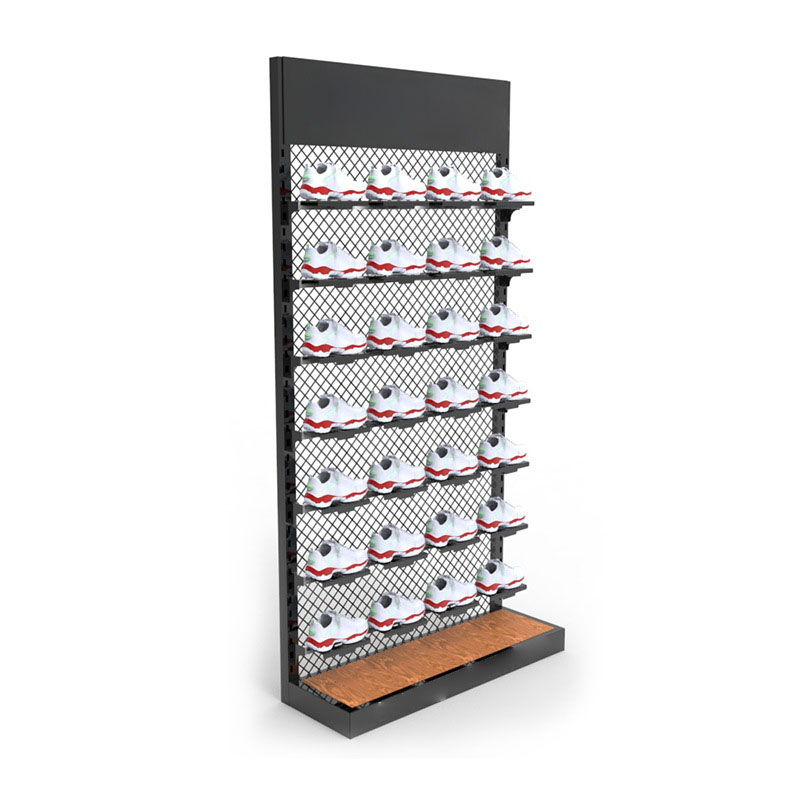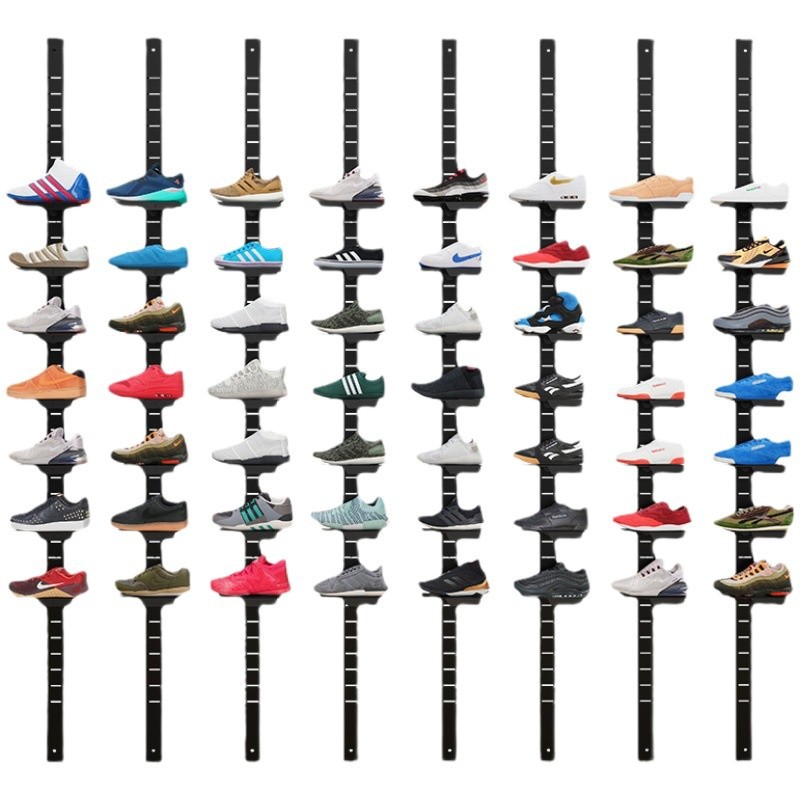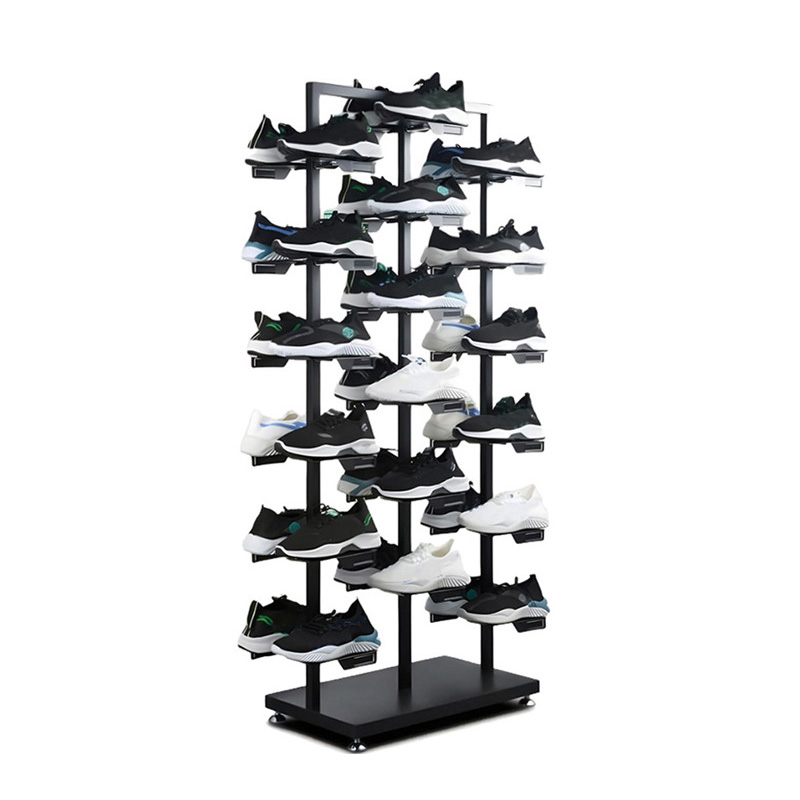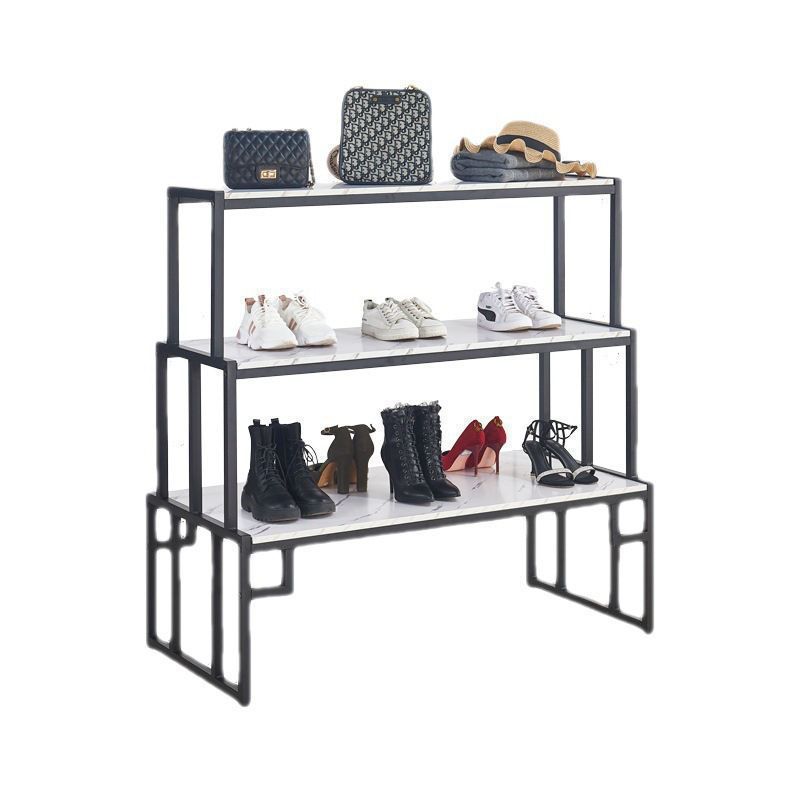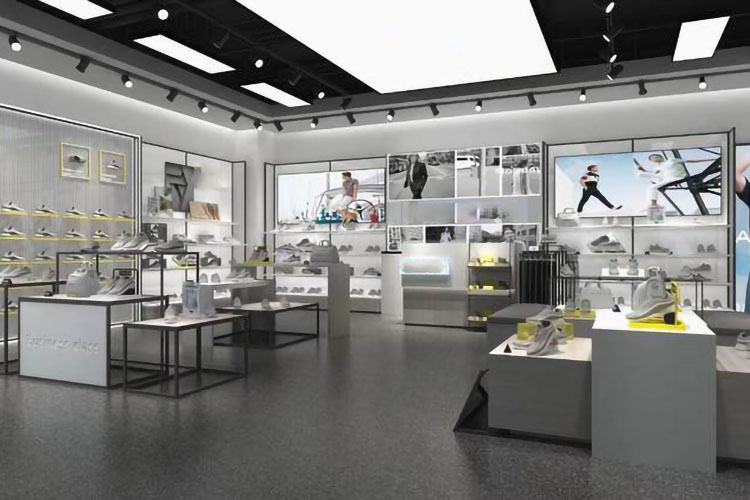
تصميم متجر الأحذية
The art of shoe shop design goes beyond mere aesthetics—it’s a strategic approach to creating retail environments that showcase products effectively while guiding the customer journey. A thoughtfully designed shoe store can dramatically influence purchasing decisions, increase dwell time, and strengthen brand identity. In today’s competitive retail landscape, investing in distinctive shoe store design has become essential for retailers seeking to create memorable shopping experiences.
Modern Shoe Shop Design Ideas
Today’s most successful shoe stores embrace clean lines, strategic lighting, and interactive elements. Modern shoe shop design trends include floating displays, digital integration, sustainable materials, and dedicated experience zones that transform traditional retail into immersive brand environments.
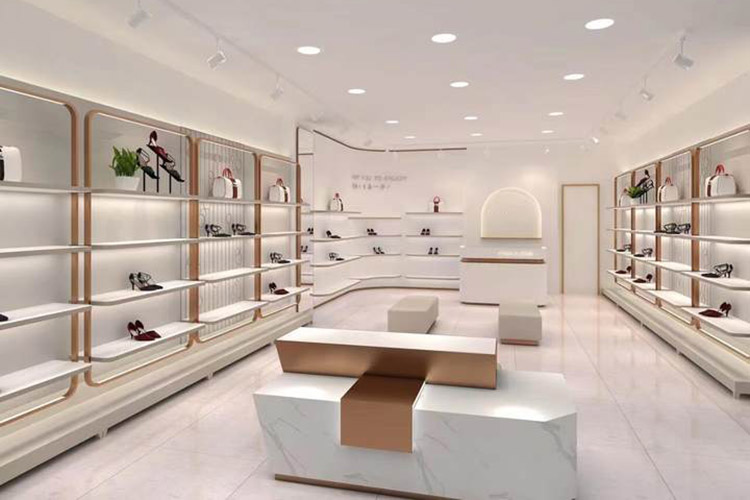

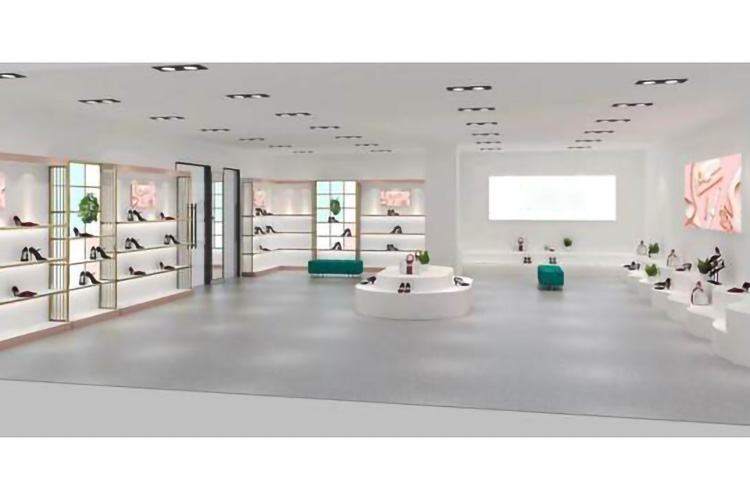
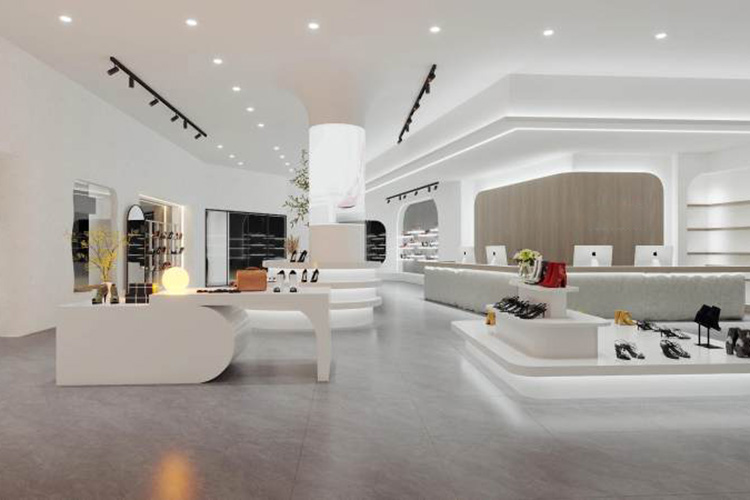
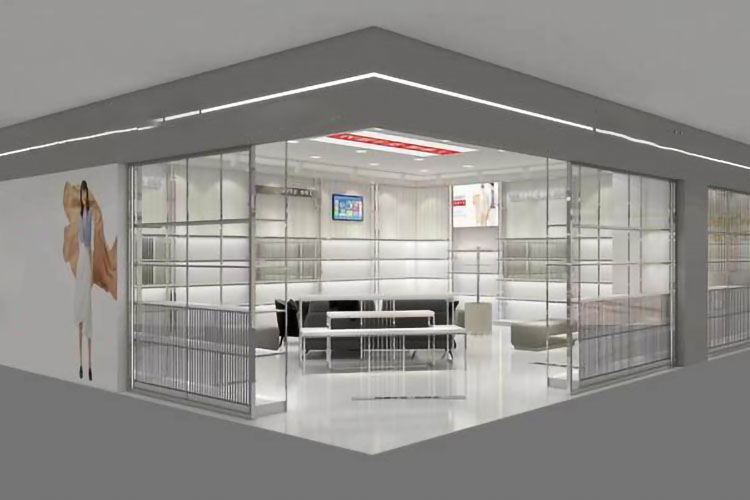
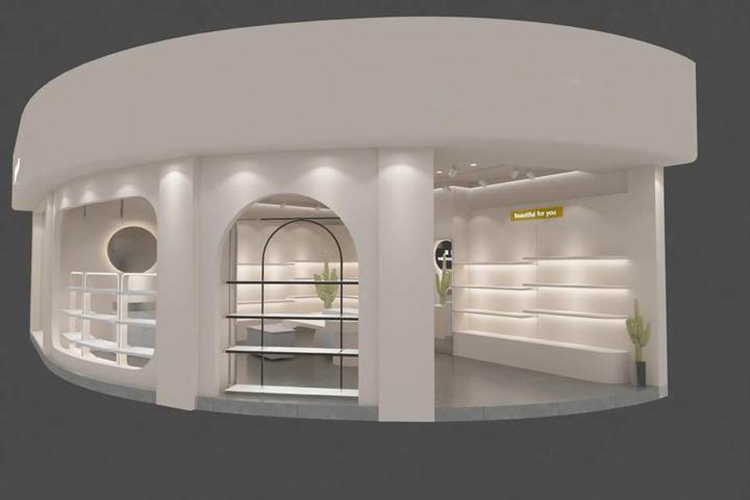
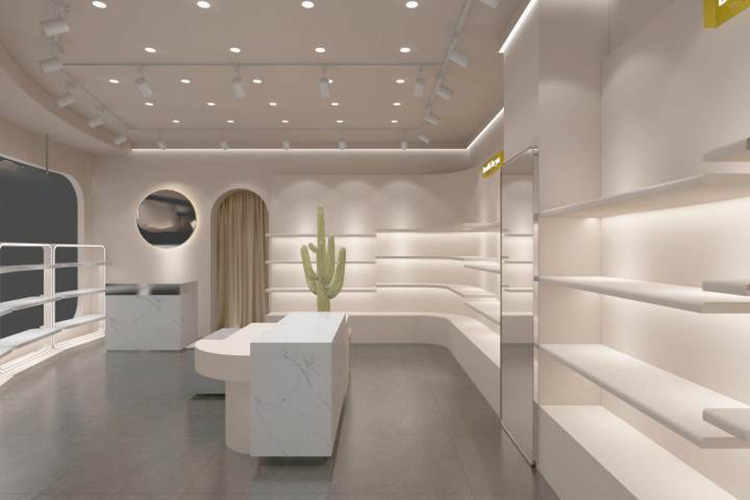
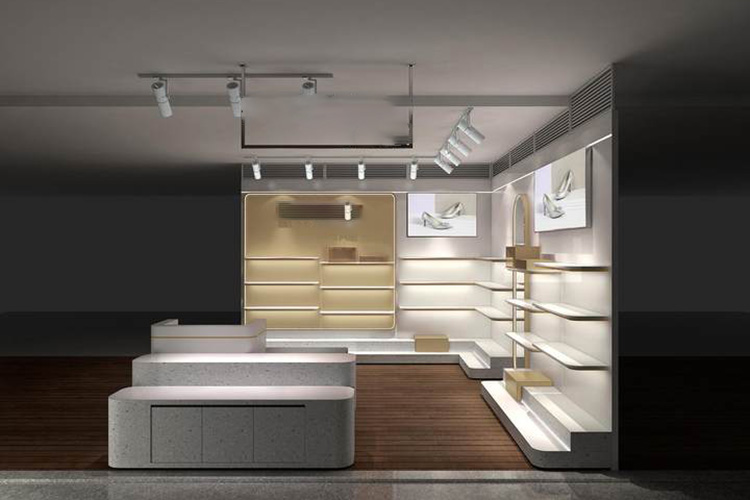
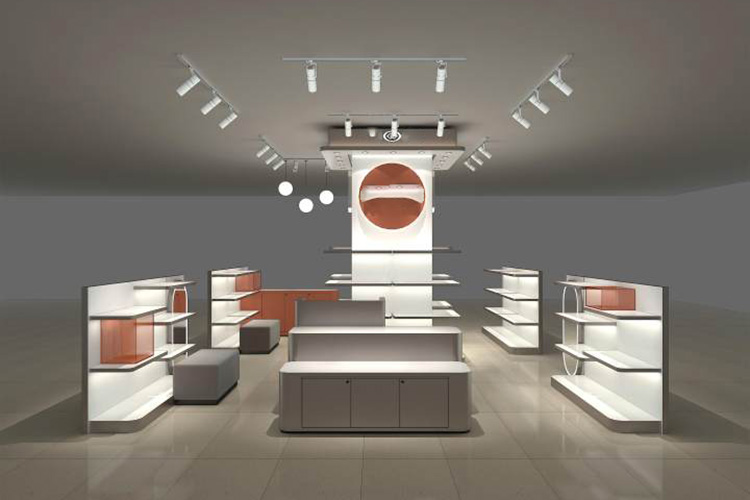
Features of A Good Shoes Shop Design
Creating an effective shoe shop interior design requires careful attention to several key elements that work together to enhance both the customer experience and operational efficiency. The most successful shoe store designs seamlessly blend form and function to create spaces that not only look impressive but also drive sales.
Strategic Lighting Design
A well-executed lighting plan combines ambient lighting for overall illumination, accent lighting to highlight featured products, and task lighting in try-on areas. The right lighting not only showcases products in their true colors but also creates atmosphere and guides customer attention to high-priority displays. LED track lighting with adjustable beams allows for flexibility as merchandise changes seasonally.
Comfortable Try-On Areas
The try-on zone should feature comfortable seating, adequate space for customers to walk and test footwear, and strategically placed mirrors that allow viewing from multiple angles. Privacy and personal space are essential considerations, as customers need to feel at ease during this critical decision-making moment.s, signage, and interactive elements to facilitate easy browsing and quick transactions.
Effective Visual Merchandising
How shoes are displayed significantly impacts customer perception and sales. A good shoe shop design incorporates various display heights, creates focal points for featured collections, and arranges products in logical categories that make sense to shoppers. The most effective displays tell a visual story, with complementary products grouped together to encourage multiple purchases.
Brand-Consistent Aesthetics
Every element of your shoe store design should reinforce your brand identity. From color schemes and materials to fixtures and signage, visual consistency builds recognition and trust. This doesn’t mean every shoe shop must look identical—rather, the design should reflect the unique personality and positioning of your brand while maintaining recognizable elements across locations.
Efficient Space Planning
Successful layouts balance display density with comfortable navigation space, ensure clear sightlines across departments, and position key categories strategically to maximize exposure. The best designs also consider staff needs, with efficient storage solutions and workspaces that support excellent customer service.
Shoe Store Layout Options
The layout you choose for your shoe store significantly influences how customers interact with your merchandise and ultimately impacts your sales performance. Different shoe store layout approaches offer distinct advantages depending on your space, product mix, and target customer.
This shoe shop design creates a defined path that guides customers through the entire store before reaching the checkout. Display fixtures line both the outer walls and create an inner loop of merchandise.
This shoe store interior design uses curved paths and varied fixture heights to create a more organic shopping experience. This approach works particularly well for boutique footwear retailers and stores emphasizing premium or fashion-forward collections.
This efficient design maximizes product display space and simplifies inventory management. Shoppers appreciate the familiarity of grid layouts, which allow for easy navigation and quick location of specific items.
This increasingly popular shoe shop design divides the space into distinct zones based on product categories, styles, or brands. Each area features unique design elements that create immersive micro-environments.
iYubo Offers One-stop Footwear Shop Design Solution
iYubo transforms footwear retail spaces through comprehensive design solutions tailored to your specific business needs. Our expert team handles every aspect of shoe shop design—from initial concept development through implementation—creating distinctive retail environments that maximize sales while reflecting your unique brand identity. We combine industry knowledge with creative innovation to deliver shoe store designs that not only look impressive but also function efficiently for both customers and staff.
What do You Need for Shoe Shop Display
Creating an impactful shoe store interior requires carefully selected display fixtures that showcase your products while supporting operational needs. The right combination of display elements significantly influences customer perception and purchasing decisions. Here’s a comprehensive guide to essential shoe shop display fixtures:
Wall-mounted displays are the backbone of most shoe store designs, maximizing vertical space while creating impressive product presentations. Options include:
- Slatwall panels with adjustable shelving and brackets
- Wall-mounted shoe risers in cascading arrangements
- Illuminated wall niches for premium footwear
- Floor-to-ceiling display walls with integrated lighting
These versatile fixtures create focal points throughout your shoe store layout and allow for flexible merchandising. Essential freestanding options include:
- Multi-tier display tables for featured collections
- Gondola units with adjustable shelving
- Rotating display towers for maximum visibility
- Cubed display systems for modular arrangements
For premium or featured footwear, specialized showcase displays create emphasis and perceived value:
- Glass or acrylic display cases with internal lighting
- Elevated platforms with dramatic spotlighting
- Museum-style pedestals for designer footwear
- Digital displays with product information
تتطلب هذه المنطقة الحرجة تركيبات متخصصة:
- Counter with appropriate height (36-42 inches)
- Display cases for impulse purchases
- Packaging storage solutions
- لافتات رقمية للعروض الترويجية
- Bag storage and packaging area
Depending on your footwear categories, consider these specialized display solutions:
- Boot stands and shapers for tall footwear
- Athletic shoe walls with brand-specific sections
- Children’s shoe displays at lower heights
- Accessory displays for socks, insoles, and care products
These functional elements are critical to the purchase decision process. A complete try-on area includes:
- Comfortable bench seating with adequate height (17-19 inches)
- Footstools for easier fitting
- Full-length mirrors positioned at proper angles
- Angled foot mirrors for detailed viewing
- Privacy dividers in larger stores
Small Shoe Shop Design Tips
لإنشاء كشك بيع بالتجزئة مميز، ضع في اعتبارك نصائح التصميم التالية:
التسويق العمودي
When floor space is limited, think upward. Utilize wall space with taller shelving units (up to 78″ in selling areas) while keeping middle shelves at eye level for premium products. Wall-mounted display systems can showcase 30-40% more inventory than floor fixtures in the same footprint. Consider floating shelves with integrated lighting that create visual interest while maximizing display capacity. Remember to provide reaching tools for top-shelf access and ensure proper lighting illuminates all display levels.
تركيبات متعددة الوظائف
In small shoe shop designs, every fixture should serve multiple purposes. Select display units with storage drawers underneath, seating that doubles as display space, and checkout counters with merchandise presentation capabilities. Modular systems that can be reconfigured for seasonal needs maximize flexibility without requiring additional fixtures. Look for nesting tables that can be expanded during slower periods and condensed when floor space is needed for customer circulation.
Strategic Product Curation
Small spaces demand disciplined inventory management. Rather than offering fewer styles across many categories, consider specializing in specific footwear types that align with your target customer. This focused approach allows for deeper selection within categories while maintaining a clean, uncluttered appearance. Display your best-selling items prominently, with supporting inventory accessible but not overwhelming the visual landscape.
Mirrors and Lighting Techniques
Strategic mirror placement can dramatically expand the perceived size of your space. Position mirrors at the end of sight lines to create depth, and use reflective surfaces on fixture backs to reduce visual weight. Complement this with layered lighting that creates dimension—combine overhead ambient lighting with accent spotlights and under-shelf illumination to define zones without physical barriers. Well-executed lighting makes small spaces feel more open while highlighting products effectively.
Mobile and Modular Solutions
Incorporate fixtures that can be easily moved or reconfigured as needed. Rolling display units allow for quick layout changes based on traffic patterns or special events. Foldable or nestable seating can be deployed during busy periods and stored when space is needed for circulation. This flexibility ensures your small shoe shop design remains adaptable to changing needs without permanent infrastructure changes.
FAQs on Shoe Shop Design
The critical elements include strategic lighting design, comfortable try-on areas, effective visual merchandising, brand-consistent aesthetics, and efficient space planning. Your shoe store design should balance operational efficiency with an engaging shopping experience while reflecting your unique brand identity.
While successful shoe shops can operate in spaces ranging from 500 to 5,000+ square feet, most independent footwear retailers find 1,000-2,000 square feet optimal. This provides adequate space for inventory display (approximately 60% of floor space), customer circulation (25%), and try-on areas (15%). Smaller spaces can work with efficient shoe shop design strategies that maximize vertical merchandising and carefully curated inventory.
A combination of lighting types creates the most effective shoe store interior. Use ambient lighting (LED panels or indirect fixtures) at 30-50 footcandles for general illumination, accent lighting (adjustable spotlights) at 3-5 times ambient levels to highlight featured products, and task lighting in try-on areas. LED systems with color rendering index (CRI) above 90 provide the most accurate color representation, which is crucial for footwear.
Enhance your small shoe shop design with light color schemes (particularly on walls and ceilings), strategic mirror placement, excellent lighting (especially vertical illumination), and clear sightlines across the store. Use slimmer fixtures with glass or acrylic components that don’t visually block space. Implement floating or wall-mounted displays to maintain open floor areas and create the impression of a larger environment.
At minimum, a new shoe store requires wall-mounted display shelving, freestanding center fixtures, comfortable try-on seating with mirrors, and a functional checkout counter. Start with quality fixtures for high-visibility areas and customer interaction points, then expand your display systems as your business grows. Prioritize flexibility in your initial shoe shop display design to allow for adjustments as you learn customer preferences.
Design a clear path that guides customers through your entire inventory, typically in a clockwise pattern (which research shows most shoppers prefer). Position high-demand products at different points throughout the store to encourage complete navigation. Create a transition zone just inside the entrance where customers can orient themselves before making purchase decisions. Ensure aisles are wide enough for comfortable browsing (minimum 4 feet for main aisles).
While color choices should align with your brand identity, neutral backgrounds (whites, grays, taupes) typically work best as they allow footwear colors to stand out. Accent colors can define different departments or highlight promotional areas. For luxury footwear, darker backgrounds often make products pop, while athletic footwear benefits from energetic color accents that reflect active lifestyles.
iYubo provides end-to-end shoe shop design solutions, from initial concept development through implementation. Our services include custom fixture design, materials selection, color scheme development, size customization, logo integration, and brand packaging. We combine retail design expertise with manufacturing capabilities to create distinctive footwear environments that enhance both customer experience and operational efficiency.
اعمل مع iYubo لتحسين عرض متجرك.
باعتبارنا شركة مصنعة وموردة لشاشات العرض المخصصة للبيع بالتجزئة، فإننا نقدم مجموعة كاملة من شاشات العرض والتركيبات بجودة موثوقة لتلبية جميع متطلبات البيع بالتجزئة. أخبرنا باحتياجاتك وسوف توفر لك فرق الإنتاج والمصادر لدينا الحل الأكثر فعالية من حيث التكلفة.
